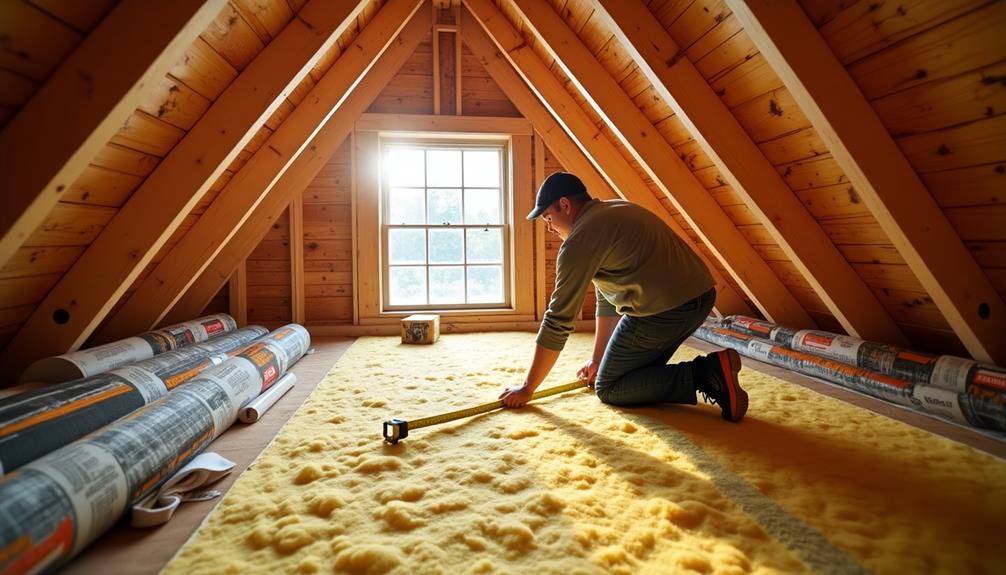Reducing your home's carbon footprint is easier than you might think, and it starts with small, practical steps that can lead to significant changes. You can upgrade to energy-efficient appliances that not only lower your energy consumption but also cut down on utility bills. Optimizing your heating and cooling systems plays a crucial role too. From water-saving fixtures to renewable energy options, there are numerous strategies to explore. Each decision you make contributes to a larger impact, but where should you begin to see the most immediate benefits?
Upgrade to Energy-Efficient Appliances
Upgrading to energy-efficient appliances can significantly lower your home's carbon footprint while saving you money on utility bills. By choosing appliances with Energy Star ratings, you're opting for products that meet strict energy efficiency guidelines set by the U.S. Environmental Protection Agency. These appliances use less energy, which means lower monthly bills and reduced greenhouse gas emissions.
When selecting new appliances, consider their lifespan as well. Energy-efficient models often last longer than traditional ones, which means you won't have to replace them as frequently. This durability not only saves you money in the long run but also reduces the waste associated with disposing of old appliances.
You'll find that investing in energy-efficient appliances is worthwhile for both your wallet and the environment. Whether it's a fridge, dishwasher, or washing machine, you'll notice a difference in performance and efficiency.
Plus, many energy-efficient appliances come with modern features that enhance usability and convenience. So, take the plunge and upgrade your appliances—your home, your finances, and the planet will thank you for it!
Optimize Heating and Cooling
To effectively reduce your home's carbon footprint, optimizing heating and cooling systems is essential. Start by making insulation improvements in your home. Check for drafts around windows and doors, and consider adding insulation to your walls and attic. Proper insulation keeps your home comfortable and reduces the strain on your HVAC system.
Next, adjust your thermostat settings. In winter, set your thermostat to 68°F when you're home and lower it when you're away or sleeping. In summer, aim for 78°F when you're at home and increase it when you're out. Each degree you adjust can lead to significant energy savings, reducing your overall carbon footprint.
Additionally, consider upgrading to a programmable thermostat. This allows you to automate your heating and cooling schedules, ensuring you're not wasting energy when you don't need it.
Regular maintenance of your HVAC system, like changing air filters and scheduling professional check-ups, also enhances efficiency.
Reduce Water Usage
After optimizing your heating and cooling systems, turning your attention to water usage can further decrease your home's carbon footprint.
Start by installing low flow fixtures in your bathrooms and kitchens. These fixtures can reduce water consumption by up to 50% without sacrificing performance. You'll notice a difference in your water bill, and you'll be doing your part for the environment.
Another effective strategy is rainwater harvesting. By collecting rainwater from your roof, you can use this resource for irrigation, flushing toilets, or even washing your car.
Setting up a rain barrel is a simple yet impactful way to utilize a natural resource and lessen your dependence on municipal water supplies.
Additionally, consider fixing any leaks in your plumbing. Even a small drip can waste gallons of water over time.
Regularly check your faucets, toilets, and pipes to ensure everything's in good shape.
Embrace Renewable Energy Sources
Switching to renewable energy sources is one of the most impactful steps you can take to reduce your home's carbon footprint. By embracing options like solar panel installation and wind energy systems, you can significantly lower your reliance on fossil fuels.
Solar panels harness the sun's energy, converting it into electricity for your home. You can either purchase them outright or consider leasing options, making it financially feasible. Plus, many states offer tax incentives or rebates, reducing the overall cost.
Wind energy systems are another great option, especially if you live in a windy area. Small wind turbines can generate power for your home and can be installed on your property. Just ensure you check local regulations and guidelines before proceeding.
Both solar and wind energy systems can help you achieve energy independence while decreasing your carbon emissions. As you switch to these renewable sources, you'll not only save on utility bills but also contribute to a more sustainable future.
Implement Smart Home Technology
Embracing innovation through smart home technology can significantly enhance your efforts to reduce your carbon footprint. By integrating smart thermostats, you can efficiently manage your heating and cooling, ensuring your home is only using energy when needed.
Energy monitors provide real-time data on your consumption, helping you identify areas where you can cut back. Automated lighting systems allow you to control when lights are on, reducing unnecessary energy usage.
Pair these with intelligent plugs that can turn off devices when they're not in use, and you'll see substantial savings. Voice control features enable you to adjust settings hands-free, making it more convenient to manage your energy use.
Home security systems often come with remote management options, allowing you to monitor and control your home from anywhere. This means you can easily adjust settings even when you're not there, ensuring you're not wasting energy.
With energy tracking capabilities, you can analyze your consumption patterns and make informed decisions to optimize your home's efficiency. By implementing these technologies, you not only enhance convenience but also take significant steps toward a greener lifestyle.
Practice Sustainable Gardening
In recent years, practicing sustainable gardening has become essential for reducing your carbon footprint and promoting biodiversity.
Start by incorporating native plants into your garden, as they're adapted to your local environment and require less water and maintenance. Using organic fertilizers instead of chemical options helps maintain soil health and supports beneficial organisms.
Explore composting techniques to recycle kitchen scraps and yard waste, enriching your soil naturally. Implement permaculture practices to create a self-sustaining ecosystem, promoting harmony among plants, animals, and the environment.
Vertical gardening is another effective method, maximizing space and allowing you to grow more food in smaller areas.
Don't overlook pest management; use natural methods like companion planting to deter pests without harmful chemicals. Plan your garden with seasonal planting in mind, ensuring you grow crops suited to your climate throughout the year.
Finally, consider community gardening, where you can share resources and knowledge while benefiting the local ecosystem.
Minimize Waste and Recycle
While it's easy to accumulate waste in our daily lives, minimizing it and recycling can significantly reduce your carbon footprint. Start by implementing zero waste practices in your home. This means being mindful of what you buy and choosing items with minimal packaging. Consider using reusable bags, containers, and bottles to cut down on single-use products.
Next, focus on composting techniques to manage organic waste. Set up a compost bin in your backyard or use a countertop composting system if space is limited. You can recycle kitchen scraps like fruit peels, vegetable trimmings, and coffee grounds, turning them into nutrient-rich compost for your garden.
Don't forget about recycling! Make it a habit to separate recyclables from regular trash. Familiarize yourself with local recycling guidelines to ensure you're sorting correctly.
Look for recycling programs in your community that accept a variety of materials, including electronics and hazardous waste.







